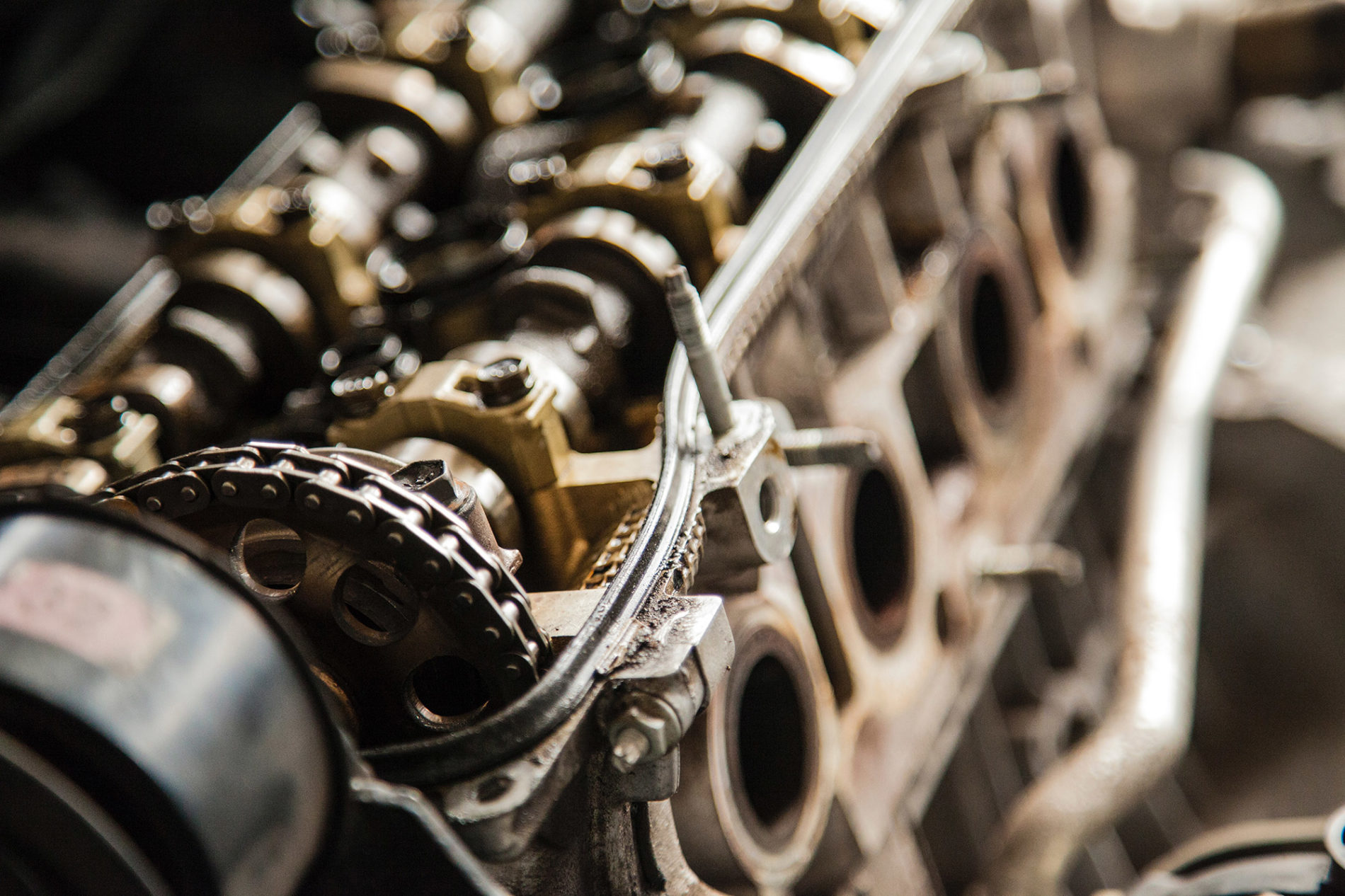Promises 30-50-percent efficiency improvement, no cost/capability compromise

It’s fun to study crazy new engine configurations, and every year or so some inventor turns up at the Society of Automotive Engineers’ annual hoe-down in Detroit with another idea for “a better mousetrap.” One of these ideas has apparently surmounted the incredible odds that face such unconventional concepts and is heading for mass production featuring six opposed pistons sharing three cylinders and spinning two crankshafts that are geared together. We hereby dub this configuration OP-3.
James Atkinson, whose name adorns many of today’s high-efficiency engines, originated his cycle on an opposed-piston engine in 1882, but the idea really gained traction in the ’30s and ’40s, when Hugo Junkers built opposed-piston engines for World War II airplanes. The configuration has been in use ever since in big-engine applications like submarines, freighters, and trains, but it was in 2004 that Achates Power was launched with the goal of bringing the technology to mainstream light vehicles, configured to mount in a mostly vertical position that fits the same envelope as a conventional I-4 or V-6, with the lower crankshaft in the same position as current cranks for easy drop-in vehicle integration. The initial focus has been on light-truck fitments, as they present a bigger challenge and greater potential for total fuel savings.

Motor Trend first discovered the technology at the 2014 SAE show, where we noted that it was heading for production in a stationary power-generation application. About a year later our August Technologue noted that tests and simulations were suggesting that a supercharged, turbocharged 4.9-liter two-stroke diesel Achates OP-3 tuned to produce 275 hp and 811 lb-ft was promising 20 percent better efficiency than Ford‘s 6.7-liter PowerStroke turbodiesel V-8. The pace of development picked up in 2015 thanks to a $9 million Department of Energy ARPA-E grant to develop the concept for light duty (another $14.4 million came in to develop military applications of the engine for the Army). Since then Achates has run its OP engines on gasoline and natural gas as well as diesel and JP8, all featuring compression ignition.
During industry days at the 2017 North American International Auto Show, CEO David Johnson announced that by 2018 Achates would produce a drivable prototype truck powered by a 2.7-liter 270-hp, 479-lb-ft supercharged turbodiesel OP-3 engine capable of complying with Tier 3, LEV III, Euro 6 emissions while exceeding 2025 CAFE standards (its projected EPA label values will be 25/32/28 mpg city/highway/combined, yielding a 37-mpg unadjusted CAFE figure when 33 is the requirement for trucks with a footprint of 65-70 square-feet). Johnson further claimed that it would be 30 percent more efficient than the best diesel engines of comparable output, and 50 percent thriftier than the best similar gas engines. But the bigger bombshell was his announcement that of the nine automakers who have signed on as development partners, at least one of them has begun tooling up to build an opposed-piston engine in volume.
Why It’s Efficient:
- Thermal efficiency: Low ratio of combustion-chamber surface area to cylinder swept volume and elimination of cylinder head mean there’s much less heat rejected to the cooling system so more of the heat of combustion goes to propelling the vehicle.
- Lower friction: With no cylinder head bolts to distort the bore, there’s less ring friction, and the lower peak operating speed of any compression-ignition engine lowers friction.
- Lower pumping work: Intake and exhaust enter and leave via ports arranged around the cylinder at the top and bottom of the pistons’ strokes, so the pistons do no pumping work. With some of these ports open at all times on an engine with three or more cylinders, the supercharger and turbo also operate more efficiently.
- Lighter weight: Lower cylinder pressures mean that even the diesel doesn’t need to be “hardened” to the same extent as a conventional four-stroke diesel.
Why Emissions Are Reduced:
- Cooler operation: Lower peak cylinder pressures and temperatures reduce the amount of NOx and other pollutants produced in the cylinder.
- Horizontal direct injection: Two fuel injectors spray across the cylinder instead of onto the hot pistons, which can cause the quenching that leads to particulate formation. Also, the stroke is long enough to fully burn the hydrocarbons.
Why Costs Are Lower:
- Simpler assembly: Eliminating the cylinder head, valvetrain, and the machining thereof gets partially offset by the addition of a second crankshaft and the gears connecting the cranks, but overall assembly should be simpler. Also note that the Achates design requires only minimal retooling of existing engine plants.
- Reduced cooling needs: Since it throws off less heat, the cooling system can likely be downsized.
- Fewer emissions to control: Cleaner engine-out emissions allows all catalysts to be downsized and/or their precious-metal loading to be reduced.
- Broad torque curve: With a broad range of torque and engine efficiency, it is less crucial to invest in nine- or 10-speed transmissions.
Bottom line: Achates claims that meeting 2025 CAFE regulations with this engine will cost about $1,000 less than doing so by further modifying and/or electrifying the current crop of engines. This should allow manufacturers to meet the more stringent standards without forcing customers to “pay for fuel economy” they don’t care about with cheap gas, and without forcing them to compromise on their vehicle’s size or capability. Meeting regulations further out into the future can be done by applying current technologies like 48-volt electrification to the Achates engine. We look forward to welcoming a new engine configuration to the roadways and to our specifications sheets.
Originally posted by Frank Marcus on Motor Trend (January 11, 2017) (View Original Article)
